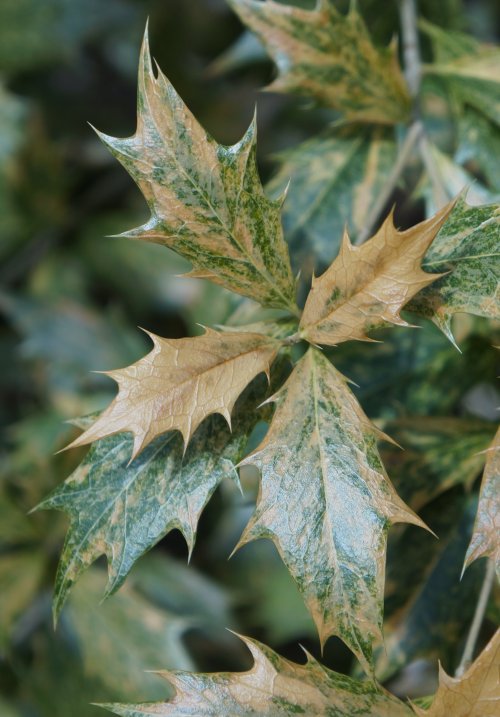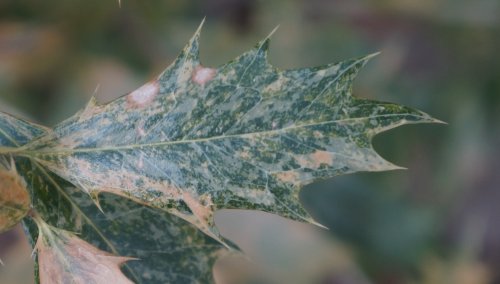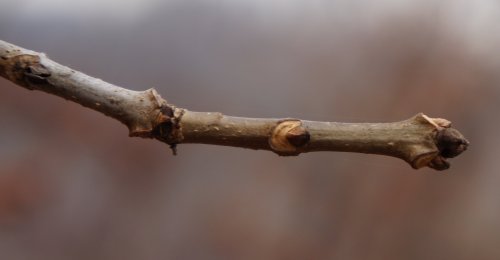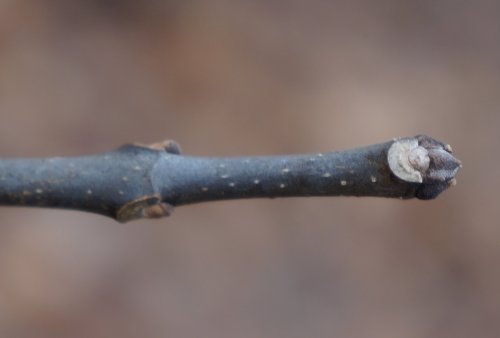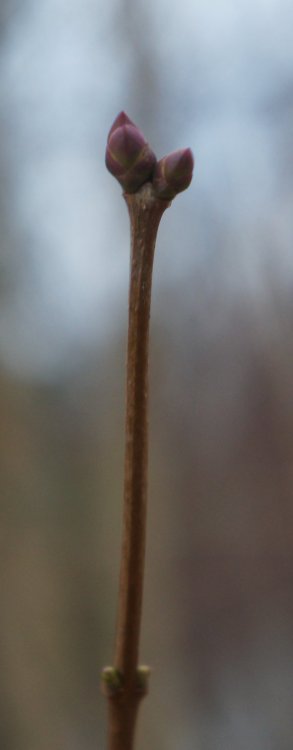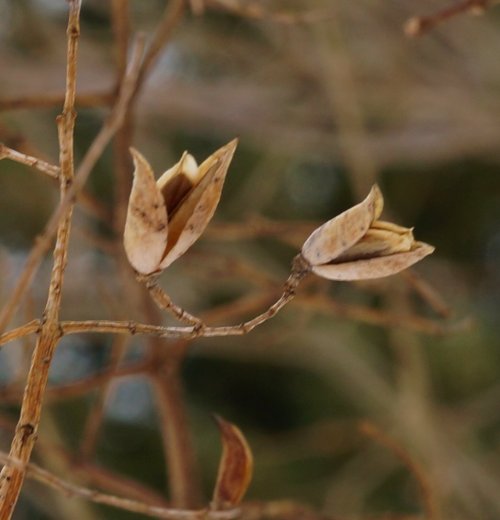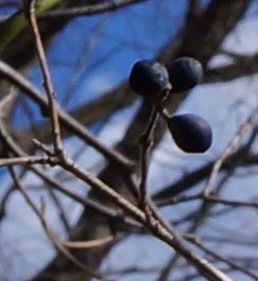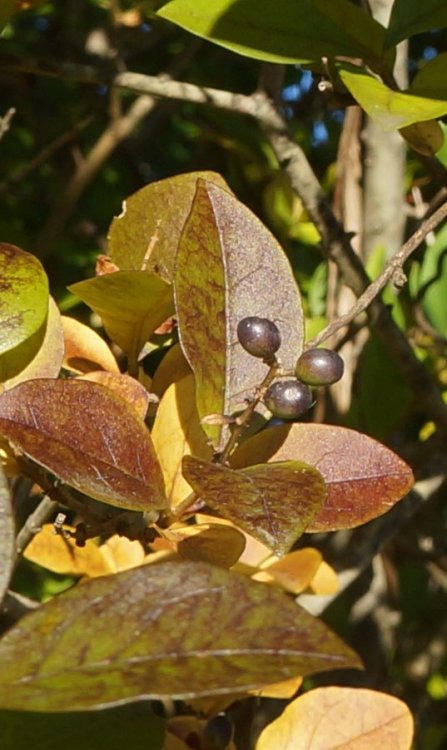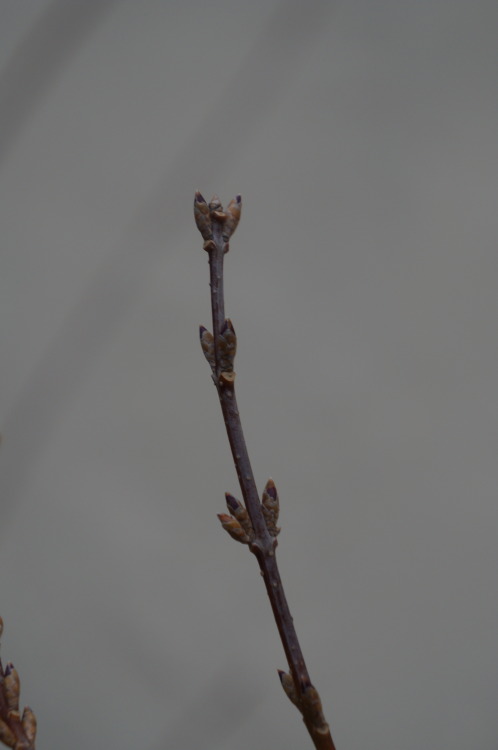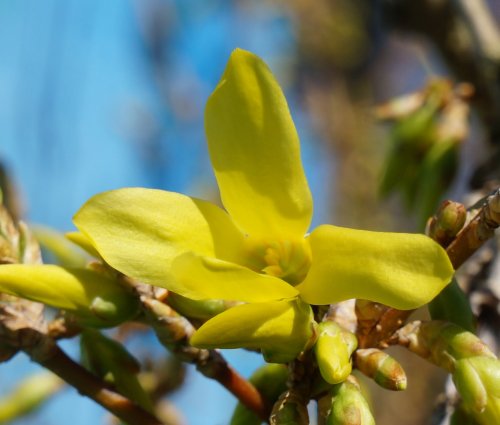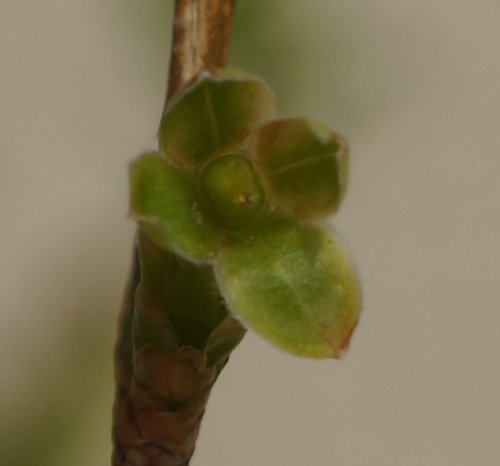There are four privets in New Jersey: border (L. obtusifolium), common (L. vulgare), Chinese (L. sinense) and California (L. ovalifolium).
In central NJ border privet is vastly more commonly escaped than all the others put together.
California privet has shiny twigs (branchlets) that are entirely smooth. All others have dull twigs.
Border privet is either deciduous or semi-evergreen. All the others are evergreen or semi-evergreen, so a privet with no leaves in late winter is border.
California privet always has pointed leaves.
Border privet never has pointed leaves (they are blunt, rounded or indented)
Chinese and common can have either pointed or rounded leaves.
Common privet only has flowers/fruit at the ends of branches, never in the axils. All others can have axillary clusters of flowers/fruit.
All privets can have flower/fruit clusters around 2 inches long. Only border privet can have clusters smaller than that. Chinese and California clusters can be up to 4 inches long.
Border and Chinese privets have dull, blue fruit (because of a bloom on the fruit). Every now and then this gets rubbed off, leaving shiny black fruit, but it's rare, and generally still present toward the center of the cluster.
Common and California privets have shiny, black fruit.
Chinese privet has stems of individual flowers and fruit longer than 1/2 inch. All other privets have short stems
Chinese and common privet have flowers with petal lobes about equal to length of tube. Chinese also has reproductive parts sticking out well beyond the tube (common does not).
California and border privet have flowers with petal lobes much shorter than their very long tubes. (but California has shiny twigs and border has dull and hairy)
Border (and only border) can have 1-inch, pointed, somewhat thorn-like branchlets. They are not always present.
To prove (or disprove) you have border privet:
when flowers are present: long tubes on flowers, twigs not shiny
when fruit is present: fruit is dull blue, not shiny black; any fruit clusters are under 2 inches, also some clusters not terminal; stems of each fruit under 1/2 inch; whole cluster under 2.5 inches; stems of fruit hairy.
when only leaves present: leaves are not pointed, small twigs are not shiny, leaves are not thick and leathery. (This will not be enough to prove you have it, it only definitively rules out California). Also, a very close shot of hairs on small twigs will show them to be of very differing lengths (that would prove L. obtusifolium). Border privet is the only one with 1-inch, pointed, somewhat thorn-like branchlets, if you see these, it's definitive.
when no leaves present (and healthy buds present): the only privet that will lose all its leaves in winter (and it doesn't always) is border. To prove it's not some other genus, make sure the buds and branches are opposite, the bark is not shreddy, no buds are more than 3 times larger than the smallest buds, no buds are more than 2 times longer than wide, no buds are red. Look for 1-inch, somewhat thorn like side branches (this is pretty much the only shrub with opposite buds and "thorns", if these are present).
